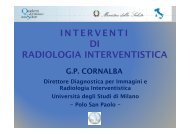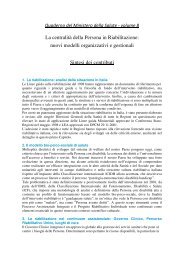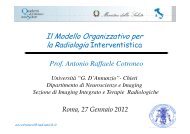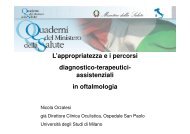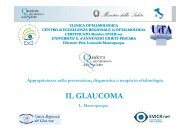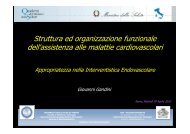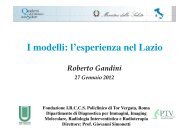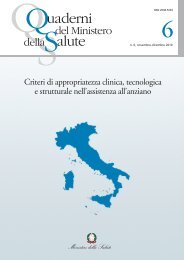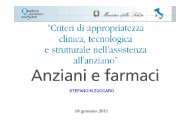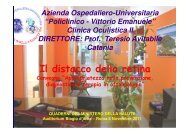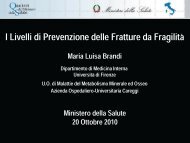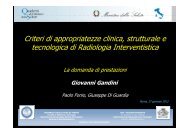Appropriatezza diagnostico-terapeutica in oncologia - Quaderni del ...
Appropriatezza diagnostico-terapeutica in oncologia - Quaderni del ...
Appropriatezza diagnostico-terapeutica in oncologia - Quaderni del ...
Create successful ePaper yourself
Turn your PDF publications into a flip-book with our unique Google optimized e-Paper software.
M<strong>in</strong>istero <strong>del</strong>la Salute<br />
Foreword<br />
The document “Diagnostic and therapeutic appropriateness <strong>in</strong> oncology”<br />
aims to def<strong>in</strong>e the standards for diagnoses, therapy, assistance and care of<br />
oncological and oncohematological patients. Just a few neoplastic diseases have<br />
been considered (breast, lung, colon-rectum, prostate, pancreas, lymphomas),<br />
which comprise two thirds of oncological disease.<br />
One may ask the reason for such an emphasis on oncological disease. In our<br />
country, cancer is second only to cardiovascular disease as cause of death; <strong>in</strong><br />
2010 there is a forecast of 250,000 new cases of cancer and an estimated prevalence<br />
of 2,000,000 of exist<strong>in</strong>g cases; moreover the <strong>in</strong>creas<strong>in</strong>g life expectancy of<br />
the population implies a gradual <strong>in</strong>crease of the <strong>in</strong>cidence of this disease. This<br />
has a substantial impact <strong>in</strong> terms of costs for care and of hospital admittance<br />
and, consequently, the need for adequate health plann<strong>in</strong>g.<br />
The present document aims at provid<strong>in</strong>g a “reflection” on the best possible use<br />
of the new diagnostic techniques and of <strong>in</strong>novative therapeutic strategies. It is<br />
<strong>in</strong>deed unquestionable that <strong>in</strong> the two last decades there has been a revolution<br />
<strong>in</strong> the prognosis and the therapeutic approach for oncological patients. However,<br />
this has resulted <strong>in</strong> a sometimes uncontrolled <strong>in</strong>crease <strong>in</strong> the health expenses.<br />
In order to try to create regular and coherent standards of care, there has been<br />
an effort to def<strong>in</strong>e the criteria of appropriateness for diagnosis, stag<strong>in</strong>g, therapeutic<br />
strategy, the approach accord<strong>in</strong>g to stage and follow-up procedure, so that<br />
a global view of patient management by each pathology can be obta<strong>in</strong>ed.<br />
The ma<strong>in</strong> <strong>in</strong>spiration <strong>in</strong> the preparation of this document was the search for a<br />
multidiscipl<strong>in</strong>ary approach, a “veritable multidiscipl<strong>in</strong>ary approach” that<br />
would <strong>in</strong>volve all the professional figures, i.e. general practitioners, specialists<br />
<strong>in</strong> radiology/nuclear cl<strong>in</strong>icians, pathologists, surgeons, medical oncologists, radiotherapists<br />
and pa<strong>in</strong> therapists.<br />
This process is <strong>in</strong> accord with the National Oncological Plan, that <strong>in</strong>cludes “full<br />
management” of patients by the National Health System, <strong>in</strong> comb<strong>in</strong>ation with<br />
the best possible use of diagnostic and therapeutic approaches. The ever <strong>in</strong>creas<strong>in</strong>g<br />
“shift” of patient care from the hospital to the surgery and to home care will<br />
XI



